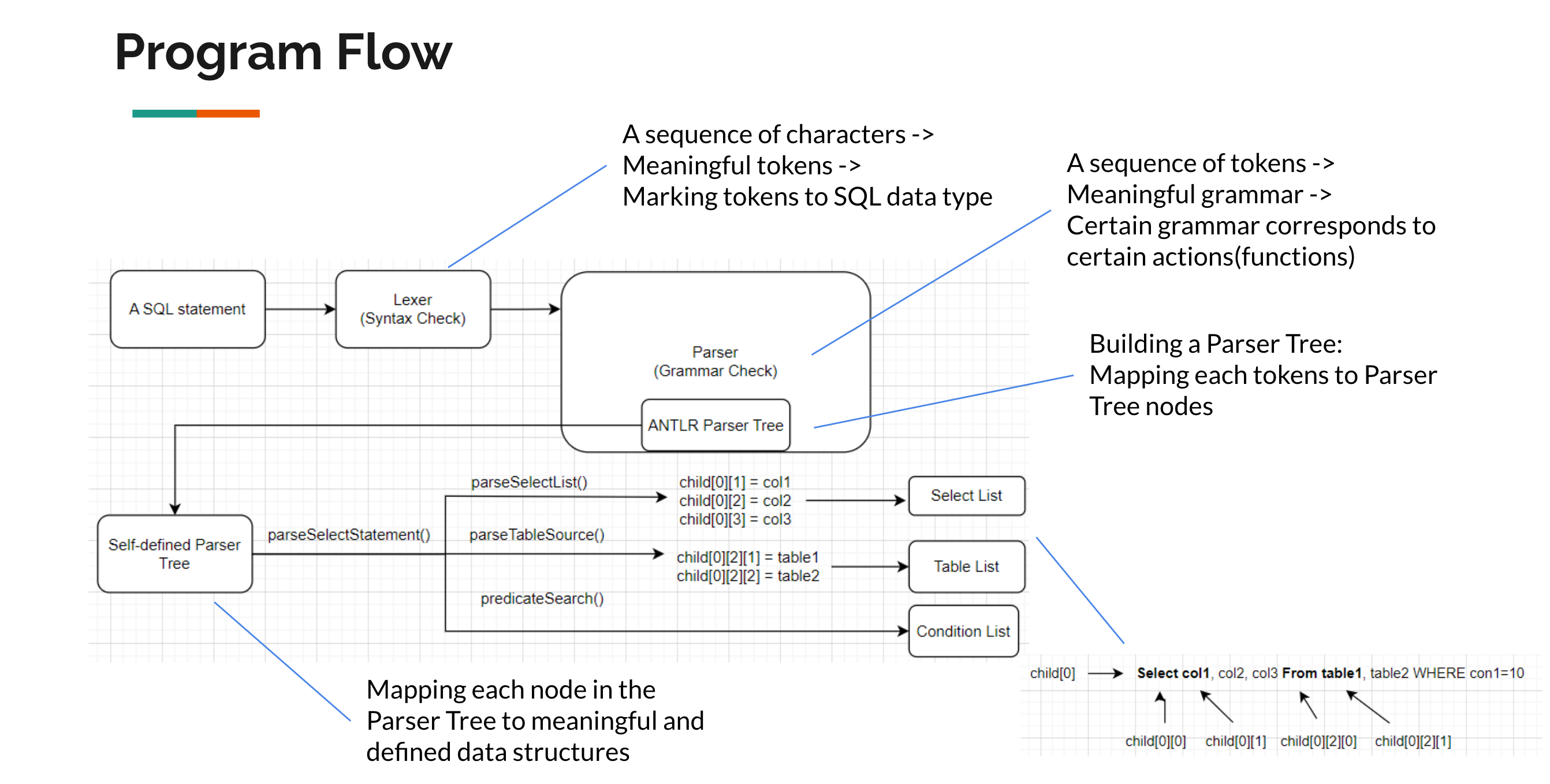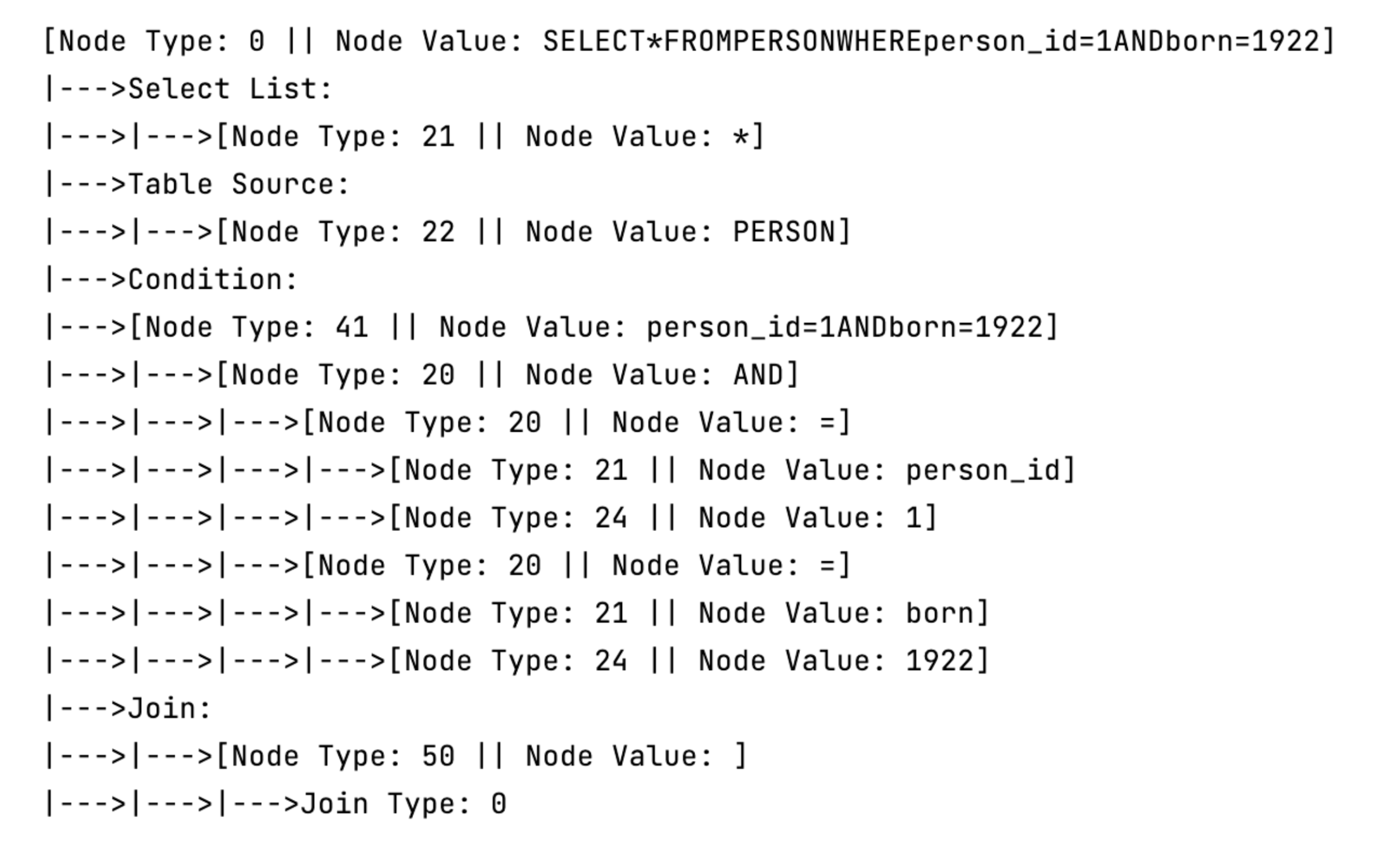Capybara - Command Processing Layer
Capybara DBMS: Query Processor Introduction
Capybara DBMS introduces a robust Query Processor as part of its architecture, designed to facilitate efficient interaction with databases. The Query Processor is the linchpin that allows clients to perform meaningful operations on databases by processing Data Definition Language (DDL) and Data Manipulation Language (DML) statements. This document provides an overview of the components and functionalities of the Query Processor within Capybara DBMS.
Query Processor Components
DDL Interpreter
- Purpose: Interprets DDL statements, incorporating the definitions directly into the data dictionary. This process ensures that the database structure can evolve as needed, maintaining flexibility and adaptability.
DML Compiler
- Functionality: Translates DML statements into an evaluation plan comprising low-level instructions that the query evaluation engine can execute.
- Optimization: The compiler enhances query performance through optimization, crafting a plan that reduces execution time without compromising accuracy.
Query Evaluation Engine
- Execution: Carries out the instructions generated by the DML compiler, interacting directly with the database data to fulfill query requests.
SQL Parser
An integral part of the Query Processor, the SQL Parser deconstructs SQL commands into their constituent elements, making it easier for applications to interpret and process SQL queries. The parser undertakes:
- Lexical Analysis: Breaks down the SQL query into tokens, identifying the fundamental elements like keywords and operators.
- Syntax Analysis: Ensures the query conforms to SQL’s grammatical rules, utilizing a parse tree or AST for structural representation.
- Semantic Analysis (Optional): Verifies the query’s logic, such as the existence of referenced tables and the validity of operations based on column data types.
Understanding SQL Grammar
SQL Grammar encompasses the complete set of rules that define SQL statement structures, including keywords, expressions, and operators. Mastery of SQL grammar is crucial for writing efficient and accurate SQL queries and for developing effective parsers.
ANTLR: Automated Parser Generation
ANTLR simplifies parsing by auto-generating lexer and parser code from a defined grammar, enabling developers to create applications that can process specific formats of code, data, or text.
Abstract Syntax Tree (AST)
The AST represents the abstract syntax of source code, offering a structured format that is crucial for:
- Semantic Analysis: Enables in-depth analysis of code semantics, including type compatibility and variable usage.
- Optimization and Transformation: Facilitates code optimization and transformation, aiding in efficient target code generation.
Custom AST Generation
Capybara DBMS opts for generating its own AST due to the limitations of ANTLR-generated ASTs, such as inconvenient access methods and immutability. By creating a custom AST, Capybara DBMS achieves:
- Ease of Use: Nodes are grouped by category, allowing for intuitive access.
- Customization: Adapts the AST to meet project-specific requirements, enabling performance optimization of SQL statements.

Examples of Self-defined Parse Tree
1 | SELECT * FROM PERSON WHERE person_id = 1 AND born = 1922; |

In summary, the Query Processor of Capybara DBMS is a comprehensive suite designed to interpret, compile, and execute database queries efficiently. Through components like the DML Compiler, DDL Interpreter, and a sophisticated SQL Parser, it ensures that database interactions are both effective and performance-optimized.







